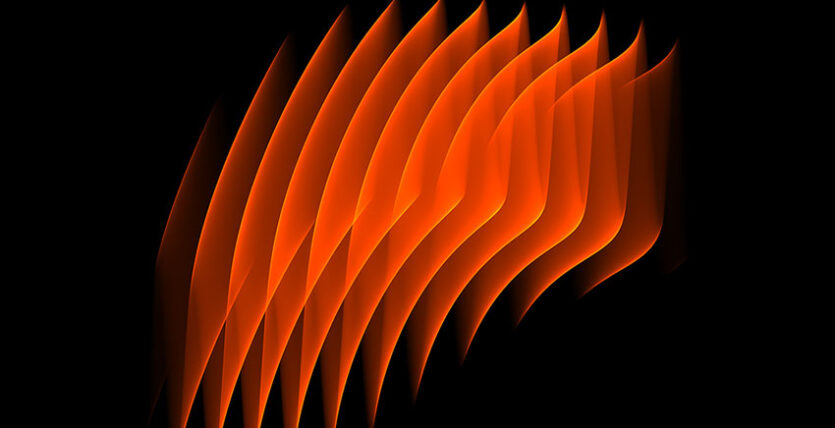What Is a Vector Line Drawing?
Drawing has always been with us since ancient times. No matter what we design and invent, drawing is the first thing we do before shedding light on something. But over the years, the techniques of drawing and the tools used have been drastically changed. Thanks to modern technologies to make things happen.
We can consider vector line drawing as digital artwork where different types of lines, shapes and other objects come into play in designing something. But the specialty of vector drawing is, the shapes and curves are designed by mathematical formula. Compared to raster drawing, the vector line drawing is even more scalable.
If you are on a mission of digital artwork or designing graphical objects, having a very good idea about vector line drawing and how to make the most out of it makes sense. And in today’s blog, we will uncover everything you should know.
Emergence of Vector Line Drawings in the Digital Age
Vector line drawing in the digital age is supposed to play a prominent role, especially in the field of graphic design. And that’s the reason why graphic designers around the world are making the most out of it on a consistent basis. Look, vector line drawing is always there. But due to the recent invention of new technologies, we have seen the rapid use of vector line drawing over the years.
Also, vector line drawings can be resized without even losing any of its quality. And that’s what the type of drawing is effective, along with some of the prominent factors. When it comes to web graphics and animation, the vector line drawing comes into play on a large scale, allowing people to have stunning content within a short period of time.
What Are the Key Characteristics of Vector Line Drawing?
Vector line drawing has a distinct difference compared to any type of digital drawing. And you need to be well-aware of that if you want to make the most out of it.
Vector line drawings are created digitally, in contrast to traditional drawings that are created using pencil or brush strokes. Unlike photos, which are made up of millions of small squares (called pixels), they are made using mathematical algorithms. Consider every line as a road with certain points defining it. This makes it possible for vector line art to have distinctive qualities. A primary benefit is the capacity to scale.
A vector line painting on a billboard will not become fuzzy or pixelated as it is enlarged. They are therefore ideal for logos and other visuals that must be utilized in a range of sizes. A vector line drawing is also very easy to alter.
It is simple to deal with individual lines, change their thickness, or even erase them entirely without compromising the integrity of the piece. The end effect is frequently a sophisticated, minimalist look that is ideal for expressing a concise idea or design. Consequently, you’re probably witnessing the power of vector line drawings in action the next time you see a crisp logo or a website icon with clear lines.
Why Are Vector Lines Used?
There are a good number of fields out there who are making the most of the vector line drawing technique. From the field of graphic design to the world of animation, vector line drawing comes into play with its helping and keeps the things alive. We know how mathematics can help the world.
Vector lines are incredibly versatile and efficient, which is why the design profession uses them so extensively. Unlike traditional drawings, which may distort when scaled, vector lines remain straight regardless of size.
This makes them ideal for logos and branding elements that need to seem flawless on anything from business cards to billboards. Additionally, vector lines offer incredible editing versatility. It is easy for designers to manipulate individual lines, altering their shape or thickness without compromising the overall composition.
This flexibility allows for quick tweaks and alterations, which is crucial in the fast-paced world of design. Because they are clear and basic, vector lines are visually attractive. Their capacity to represent complex ideas with simple brushstrokes makes them perfect for infographics, illustrations, and icons that require clarity and impact. Because of their scalability, ease of editing, and classic beauty, vector lines are therefore the go-to choice for designers seeking precision, efficacy, and visual impact.
What Are the Benefits of Vector Line Art?
If you can make the most out of vector art drawing, this is supposed to bring you a good number of benefits. Moreover, you are supposed to generate clean lines that help in advanced graphic design and animation. At the same time, when it comes to generating scalable images, you will find vector art drawing super helpful.
For designers, vector line art offers a potent blend of accuracy and adaptability. Because vector lines scale to maintain their sharpness and clarity, they are ideal for logos and visuals that are used in a variety of mediums, unlike traditional art. It’s simple to edit, making it possible to modify the width, form, and even erase individual lines.
This results in a simple, minimalistic look that is excellent at making points very evident. Vector lines are an invaluable asset to any designer’s toolkit because of their simple scaling, seamless editing capabilities, and classic appearance.
Final Words
Now you have a pretty compact idea about vector line drawing. Moreover, if you want to take your graphic design experience to the next level, vector line drawing is supposed to help you on a large scale.

